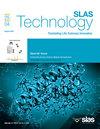PRIMDEx: Prototyping rapid innovation of microfluidics devices for experimentation
IF 3.7
4区 医学
Q3 BIOCHEMICAL RESEARCH METHODS
引用次数: 0
Abstract
Microfluidics has quickly become an established technology in the transformative fields that make up broader biotechnology. Microfluidics has applications spanning the entire breadth of the discipline, from chemical synthesis, environmental monitoring, biomedical diagnostics, to lab- and organ-on-a-chip. New demands for novel microfluidic chips have outpaced their contemporary manufacturing methods, thus limiting their scientific applicability. This predicament is particularly accentuated for R&D and research laboratories where resources (time & money) are limited. Manufacturing a microfluidic device (MFD) for mass production typically involves outsourcing a design for CNC machining of the negative mold, followed by Injection Molding (IM) the positive-feature consumables or MFDs. This process can cost ∼$1000-$5000 depending on complexity and can require a 1–2-week lead time. In comparison, 3D Printing (3DP) is limited by long print times, limited resolutions, and higher per unit material cost. This leaves traditional commercial fabrication processes impractical to implement into a typical biotech experimental procedure, where they could be subjected to constantly changing experimental demands and redesigns. Each redesign and subsequent round of fabrication demands greater cost and time investments. Here, we present PRIMDEx, or Prototyping Rapid Innovation of Microfluidic Devices for Experimentation, to address this by integrating both 3DP and rapid IM into a single manufacturing workflow. PRIMDEx implemented the advantages of both manufacturing methods to establish an approach more conducive to the design-test-build cycles of biotech and biomedical research regimes.
实验用微流体设备的原型快速创新。
微流体技术已迅速成为构成更广泛的生物技术的变革领域的一项成熟技术。微流体的应用横跨整个学科的广度,从化学合成,环境监测,生物医学诊断,实验室和器官芯片。对新型微流控芯片的新需求已经超过了其当代制造方法,从而限制了其科学适用性。对于资源(时间和金钱)有限的研发和研究实验室来说,这种困境尤为突出。制造用于批量生产的微流控装置(MFD)通常涉及外包负模的CNC加工设计,然后是注塑成型(IM)正特征耗材或MFD。根据复杂程度,这一过程的成本可能在1000- 5000美元之间,并且可能需要1-2周的交货时间。相比之下,3D打印(3DP)受到打印时间长、分辨率有限和单位材料成本较高的限制。这使得传统的商业制造工艺无法应用到典型的生物技术实验过程中,因为它们可能会受到不断变化的实验要求和重新设计的影响。每次重新设计和随后的制造都需要更多的成本和时间投资。在这里,我们提出PRIMDEx,即用于实验的微流体设备原型快速创新,通过将3d打印和快速IM集成到单个制造工作流程中来解决这个问题。PRIMDEx利用这两种制造方法的优势,建立了一种更有利于生物技术和生物医学研究制度的设计-测试-制造周期的方法。
本文章由计算机程序翻译,如有差异,请以英文原文为准。
求助全文
约1分钟内获得全文
求助全文
来源期刊

SLAS Technology
Computer Science-Computer Science Applications
CiteScore
6.30
自引率
7.40%
发文量
47
审稿时长
106 days
期刊介绍:
SLAS Technology emphasizes scientific and technical advances that enable and improve life sciences research and development; drug-delivery; diagnostics; biomedical and molecular imaging; and personalized and precision medicine. This includes high-throughput and other laboratory automation technologies; micro/nanotechnologies; analytical, separation and quantitative techniques; synthetic chemistry and biology; informatics (data analysis, statistics, bio, genomic and chemoinformatics); and more.
 求助内容:
求助内容: 应助结果提醒方式:
应助结果提醒方式:


